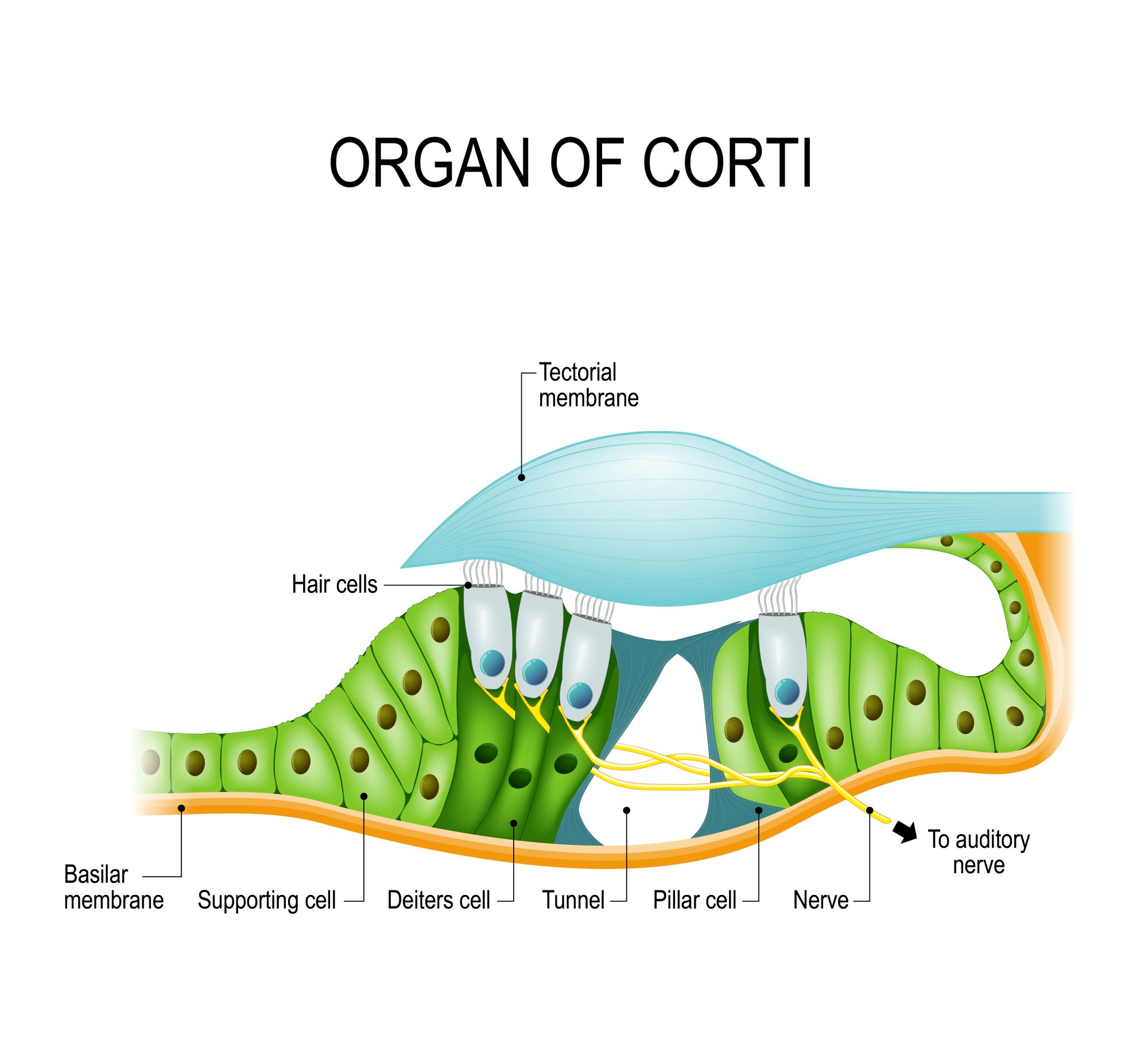Is hearing loss genetic and what can be done about it?
Approximately one in 5 people suffer from hearing loss and according to the CDC, up to 60% of hearing loss in babies is genetic. Genetic or hereditary refers to heritable genes and their variations that are passed down from parent to offspring. Genes are stretches of DNA that carry the instruction manuals for our cells to function properly. While there are many genes involved in hearing, sometimes these genes are passed down with incorrect DNA sequences called mutations. At least 100 gene mutations are linked to hearing loss.
The ability of the ear to attenuate and amplify sound depends on sensory hair cells, called stereocilia. The stereocilia must first make contact with the inner ear’s membrane, which transmits vibrational signals to the brain. The stereocilin protein acts as a foundation bridging the contact between the stereocilia and the membrane. When sound waves enter the ear, they bend the stereocilia which is transmitted as a nerve impulse through the auditory nerve to the brain and recognized as sound. Functional stereocilia can amplify sound by up to a million-fold.
The role of STRC – the gene that encodes human stereocilin
Unfortunately, the gene that encodes stereocilin, called STRC, is the second most common genetic cause of hearing loss. Multiple studies suggest that up to 16% of genetic hearing loss is a result of mutations in the STRC gene.
STRC gene mutations present with nonsyndromic hearing loss, which is defined by a loss of hearing which is not associated with other signs and symptoms. This mutation can cause hearing loss before a child learns to speak (prelingual) or begin after a child learns to speak (postlingual). This hearing loss specifically affects the ability to hear high-frequency sounds.
Novel gene therapy research to try and reverse hearing loss.
When the stereocilin gene is mutated, hair cells are not able to be properly stimulated and transmit signals. Given the hair cells remain functional, they are receptive to gene therapy. This was the primary motivation for Dr. Olga Shubina-Oleinik1, Jeffery Holt, and colleagues at Boston Children’s Hospital who worked tirelessly to develop a novel gene therapy technique to replace the mutated stereocilin in mice. This was no trivial task however after extensive efforts, the gene therapy successfully reversed the hearing loss in the mice. The research team is now testing the technique in human cells, derived from patients with STRC hearing loss. If the gene therapy is effective in human cells then the group will apply for FDA approval.
Source: Dual-vector gene therapy restores cochlear amplification and auditory sensitivity in a mouse model of DFNB16 hearing loss Olga Shubina-Oleinik1, Carl Nist-Lund1, Courtney French2, Shira Rockowitz2, A. Eliot Shearer1,2, Jeffrey R. Holt1,3, Science Advances



